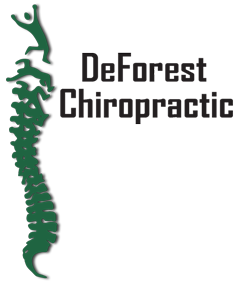Chiropractic Care
What is Chiropractic Care?
Chiropractic is a natural form of health care that uses spinal adjustments to correct misalignment’s and restore proper function to the nervous system, helping your body to heal naturally. Chiropractic doesn’t use drugs or surgery. Rather, a chiropractic spinal adjustment-the application of a precise force to a specific part of the spinal segment-corrects the misalignment, permitting normal nerve transmission and assisting your body to recuperate on its own.
What type of techniques do you use?
Chiropractic Adjustment-Diversified
The objective of this chiropractic treatment is to reduce the subluxation, with the goals of increasing range of motion, reducing nerve irritability and improving function.
A high velocity, short lever arm thrust applied to a vertebra. An accompanying, audible release of gas (joint cavitation) that is caused by the release of oxygen, nitrogen, and carbon dioxide, which releases joint pressure. A relieving sensation most of the time, although minor discomfort has been reported (that usually lasts for a short time duration) if the surrounding muscles are in spasm or the patient tenses up during this chiropractic care.
Activator
Activator technique utilizes a small spring-loaded adjusting instrument to deliver a focused corrective impulse into the dysfunctional spinal segment. This technique is most commonly used in patients who prefer a low-force correction without the traditional “hands-on” thrust.
The hand-held Activator instrument is specifically designed to deliver a controlled, light and fast thrust without undue strain to the patient.
Flexion Distraction with Cox Table
Flexion Distraction is a chiropractic technique used to treat many conditions of the lumbar spine. It is a non-surgical technique aimed at increasing spinal motion and resolving disc bulges and disc herniation’s. Flexion-distraction and decompression helps relieve spinal pain and return patients to their desired quality of life by …
- dropping intradiscal pressure to as low as -192mm Hg
- widening the spinal canal foraminal area by 28%
- reducing pressure on the spinal nerves
- returning motion to the spinal joints
Trigger Point Therapy
Focuses on releasing muscular shortness and tightness. Many patients seek myofascial treatment after losing flexibility or function following an injury or if experiencing ongoing back, shoulder, hip, or virtually pain in any area containing soft tissue. Other conditions treated by trigger point therapy include Temporo-Mandibular Joint (TMJ) disorder, carpal tunnel syndrome, or possibly fibromyalgia or migraine headaches. Patient symptoms usually include:
- Tightness of the tissues that restricts motion or pulls the body out of alignment, causing individuals to favor and overuse one hip or shoulder, for example
A sense of excessive pressure on muscles or joints that produces pain - Pain in any part or parts of the body, including headache or back pain.
Active Muscle Release
Active Release Technique or ART is the gold standard of soft tissue treatment for sports injuries. Injured muscles, ligament, fascia, tendons and nerves all respond extremely well with Active Release Technique treatment. What separates ART treatment from conventional massage or muscle work, is the precise directed tension and the very specific movement to ensure the smooth movement of tissue, the directed breaking up of scar tissue and the ability restore function with minimal treatment time.
Electrical Muscle Stimulation (EMS)
also known as neuromuscular electrical stimulation (NMES) or electromyostimulation, is the elicitation of muscle contraction using electric impulses. The impulses mimic the action potential coming from the central nervous system, causing the muscles to contract. The impulses are generated by a device and delivered through electrodes on the skin in direct proximity to the muscles to be stimulated. The impulses mimic the action potential coming from the central nervous system, causing the muscles to contract. The electrodes are generally pads that adhere to the skin. The use of EMS has been cited by sports scientists[2] as a complementary technique for sports training and published research is available on the results obtained.
LED Light Therapy
Life Light devices are designed to provide set dosages of specific light wavelengths which are pulsed at different frequencies. These wavelengths have been researched by universities and government facilities to be optimal in their effect on the body. Each treatment protocol is responsible for triggering certain responses at the cellular level which are shown to be effective in treating many conditions. Some of these are: scar tissue, healing of wounds, sports injuries, bruising and inflammation, back pain, acne, wrinkles, diabetic neuropathy, Arthritis and Fibromyalgia pain, as well as many others.
